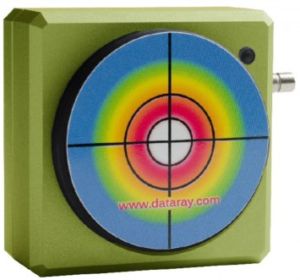FindLight Blog » Findlightopedia » Page 27 of 38
Medical Lasers: A Guide to Various Effects and Choices
The first medical application of lasers was reported by Goldman in 1962. In cardiovascular surgery, McGuff first used a Ruby laser in 1963 for the experimental ablation of atherosclerotic plaques. After a ...
Laser Cooling: A Future for Cryogenics Without Liquid Coolants
Low temperature physics has helped us produce exotic quantum materials such as superconductors. This usually requires cryogenic fluids such as liquid nitrogen and helium for operation. Recently cooling ...
Surface Emitting Lasers: Types and Applications in Sensing
Since the first demonstration of the laser in 1960, people have endeavored to make lasers more compact. Semiconductor lasers achieved this desired compactness employing so called heterostructures. This ...
Diode Lasers for Cytometry: Cell Counting and Sorting
Since the invention of the first operating laser in 1960, lasers have been designed in various regions of the electromagnetic spectrum and output powers. Soon after the advent of semiconductor fabrication ...
Biodegradable Polymer Manufacturing Through Laser Processing
A team of researchers from Keio University in Japan has published their results on utilizing laser processing to produce biodegradable polymers for use in tissue engineering. Biocompatible polymers are ...
A Novel Adaptive Optics System For The Very Large Telescope
The Very Large Telescope – located in northern Chile- is one of the world’s most advanced optical instruments. The VLT consists of four unit telescopes capable of high-resolution spectroscopy and ...
Beam Quality Measurement for Efficient Use of Laser Output
Laser beams are notable for their small size and long range focusing capabilities. These qualities have been used in medicine for precision surgery, and in industry for precision cutting. However, change ...
Silicon Photonic Circuits for Optical Interconnects and All Optical Processing
Silicon photonics is the technology of using optical processing components made of silicon itself, rather than other materials. Electronic interconnects with copper contribute to high power consumption and ...
Nonlinear Effects Using Slow Light With Integrated Photonics
Light travels at the speed of around 186,000 miles per second. This tremendous speed has enabled us to use light for telecommunication systems with low losses. Engineers are constantly driven to develop ...
Photonic Crystal Fibers for Sensing Applications
Crystals are periodic structures in space. They are used in the electronics industry to control and manipulate electrons. These structures create energy gaps by allowing only electrons with certain ...










